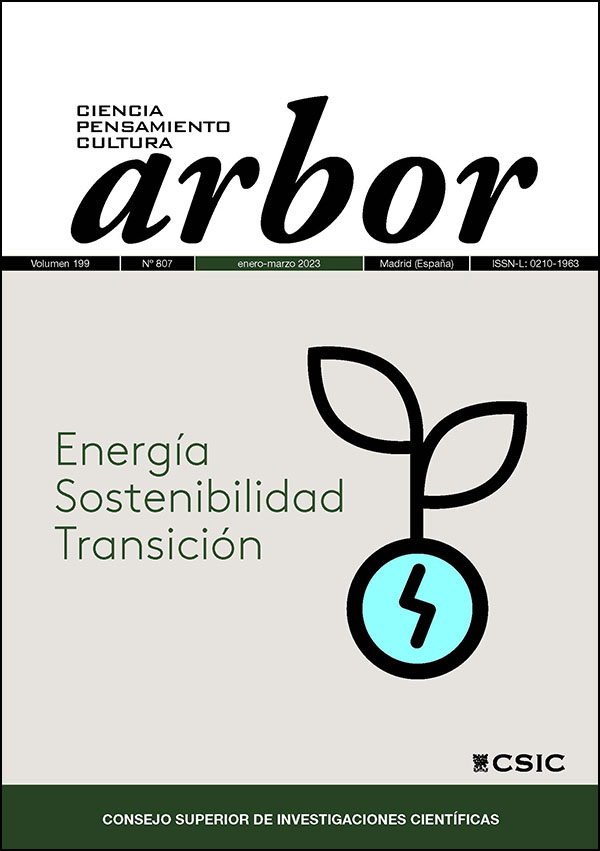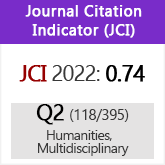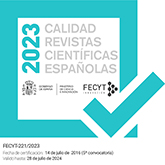Límites y potenciales tecnosostenibles de la energía: una mirada heterodoxa y sistémica
DOI:
https://doi.org/10.3989/arbor.2023.807004Palabras clave:
cambio climático, energías renovables, límites minerales, potencial tecnológico, energía neta, TREResumen
Las fuentes de energía no renovables (fósiles y nucleares) están doblemente limitadas, tanto por su finitud como por los perjuicios ecológicos y sociales que causan. Las fuentes de energía renovable tienen flujos en la biosfera muy grandes, sin embargo, los sistemas tecnológicos que las captan no son renovables y por tanto tienen limitaciones tecnológicas, ecológicas y sociales también. Aunque una buena parte de la literatura científica ha venido estimando que estos factores limitantes son pequeños frente a los políticos y económicos, aquí se muestra que esta literatura ha venido sobreestimando la capacidad tecno-sostenible obtenible a lo largo del presente siglo, en buena medida por un tecno-optimismo implícito y una falta de pensamiento sistémico. Este potencial podría ser del orden de entre la mitad y la cuarta parte del uso actual de energía, lo que apunta, dada la necesaria transición hacia fuentes renovables por problemas ambientales, a un fuerte decrecimiento de la matriz energética que sostiene nuestras sociedades a escala global.
Descargas
Citas
ACS, Chemistry for Life (2019). Endangered elements. https://www.acs.org/greenchemistry/research-innovation/endangered-elements.html American Chemical Society.
Alonso-Fradejas, Alberto (2021). 'Leaving no one unscathed' in sustainability transitions: the life purging agro-extractivism of corporate renewables. Journal of Rural Studies 81: 127-138. https://doi.org/10.1016/j.jrurstud.2020.10.001
de Blas, Ignacio et al. (2018). D4.2 (D14). Medeas European model. https://www.medeas.eu/deliverables
de Blas, Ignacio; Mediavilla, Margarita; Capellán-Pérez, Íñigo y Duce, Carmen (2020). The limits of transport decarbonization under the current growth paradigm. Energy Strategy Reviews, 32, 100543. https://doi.org/10.1016/j.esr.2020.100543
Brockway, Paul E.; Owen, Anne, Brand-Correa, Lina I.; Hardt, Lukas (2019). Estimation of global final-stage energy-return-on investment for fossil fuels with comparison to renewable energy sources. Nature Energy, 4(7), 612-621. https://doi.org/10.1038/s41560-019-0425-z
Calvo, Guiomar y Valero, Alicia (2022). Strategic mineral resources: Availability and future estimations for the renewable energy sector. Environmental Development. 41, 100640 https://doi.org/10.1016/j.envdev.2021.100640
Campbell, Colin J. y Laherrere, Jean H. (1998). The end of cheap oil. Scientific American 278(3): 78-83. https://doi.org/10.1038/scientificamerican0398-78
de Castro, Carlos (2009). Escenarios de energía-economía mundiales con modelos de dinámica de sistemas. UVa. Tesis doctoral: Accesible: https://geeds.es/wp-content/uploads/2011/11/Tesis-Carlos-de-Castro.pdf
de Castro, Carlos (2015). El potencial tecnológico de la energía eólica (vuelto a visitar). https://geeds.es/news/el-potencial-tecnologico-de-la-energia-eolica-vuelto-a-visitar/
de Castro, Carlos (2017). Colapso y transición de nuestra civilización: defensa del Gaiarquismo. La Albolafia: Revista de Humanidades y Cultura, 10: 75-94.
de Castro, Carlos y Capellán-Pérez, Íñigo (2018). Concentrated Solar Power: Actual Performance and Foreseeable Future in High Penetration Scenarios of Renewable Energies. BioPhysical Economics and Resource Quality 3, (3): 14. https://doi.org/10.1007/s41247-018-0043-6
de Castro, Carlos; Mediavilla, Margarita; Miguel, Luis J. y Frechoso, Fernando (2011). Global Wind Power Potential: Physical and Technological Limits. Energy Policy 39, (10): 6677-82. https://doi.org/10.1016/j.enpol.2011.06.027
de Castro, Carlos y Capellán-Pérez, Íñigo (2020). Standard, Point of Use, and Extended Energy Return on Energy Invested (EROI) from Comprehensive Material Requirements of Present Global Wind, Solar, and Hydro Power Technologies. Energies. 13(12), 3036. https://doi.org/10.3390/en13123036
de Castro, Carlos; Miguel, Luis J. y Mediavilla, Margarita (2009). The Role of Non Conventional Oil in the Attenuation of Peak Oil. Energy Policy 37, (5): 1825-33. https://doi.org/10.1016/j.enpol.2009.01.022
de Castro, Carlos; Mediavilla, Margarita; Miguel, Luis J. y Frechoso, Fernando (2013). Global solar electric potential: A review of their technical and sustainable limits. Renewable and Sustainable Energy Reviews, 28(2013), 824-835. https://doi.org/10.1016/j.rser.2013.08.040
de Castro, Carlos; Carpintero, Óscar; Frechoso, Fernando; Mediavilla, Margarita y Miguel, Luis J. (2014). A Top-down Approach to Assess Physical and Ecological Limits of Biofuels. Energy 64: 506-12. https://doi.org/10.1016/j.energy.2013.10.049
de Castro, Carlos; Capellán-Perez, Íñigo; Miguel, Luis J. (2022). Reply to Fthenakis et al., (2022) (refused to be published by Energies, MDPI). https://geeds.es/en/news-2/reply-to-fthenakis-et-al-2022-refused-to-be-published-by-energies-mdpi/
Capellán-Pérez, Iñigo; de Castro, Carlos y Miguel González, Luis Javier (2019). Dynamic Energy Return on Energy Investment (EROI) and material requirements in scenarios of global transition to renewable energies. Energy Strategy Reviews 26, 100399. https://doi.org/10.1016/j.esr.2019.100399
Capellán-Pérez, Iñigo; de Castro, Carlos y Arto, Iñaki (2017). Assessing vulnerabilities and limits in the transition to renewable energies: Land requirements under 100% solar energy scenarios. Renewable and Sustainable Energy Reviews. 77: 760-782. https://doi.org/10.1016/j.rser.2017.03.137
Capellán-Pérez, Íñigo et al. (2020). MEDEAS: a new modeling framework integrating global biophysical and socioeconomic constraints. Energy & Environmental Science 13: 986-1017. https://doi.org/10.1039/C9EE02627D
Capellán-Pérez, Íñigo et al. (2016). (2016). Likelihood of Climate Change Pathways under Uncertainty on Fossil Fuel Resource Availability. Energy & Environmental Science 9 (8): 2482-96. https://doi.org/10.1039/C6EE01008C
Dunlap, Alexander y Marin, Diego (2022). Comparing coal and 'transition materials'? Overlooking complexity, flattening reality and ignoring capitalism. Energy Research & Social Science, 89, 102531. https://doi.org/10.1016/j.erss.2022.102531
Enríquez, José M.; Miguel, Luis J. y Duce, Carmen (Editores) (2020). Repensar la sostenibilidad. Madrid: UNED.
EU (2021). State of the Energy Union 2021 - Contributing to the European Green Deal and the Union's recovery. https://energy.ec.europa.eu/index_en
di Felice, Louisa J.; Renner, Ansel y Giampietro, Mario (2021). Why should the EU implement electric vehicles? Viewing the relationship between evidence and dominant policy solutions through the lens of complexity. Environmental Science and Policy. 123: 1-10. https://doi.org/10.1016/j.envsci.2021.05.002
Fernández-Durán, Ramón y González-Reyes, Luis (2014). En la espiral de la energía. Vol. 1: Historia de la humanidad desde el papel de la energía (pero no solo). Vol. 2: Colapso del capitalismo global y civilizatorio. Madrid: Baladre y Libros en Acción.
Gallero, José Luis y Riechmann, Jorge (2018). Mater Celeritas. Materiales (biofísicos, políticos y poéticos) para una cronología de la aceleración. Madrid: Corazones Blindados.
Hall, Charles A.S.; Lambert, Jessica G. y Balogh, Stephen B. (2014). EROI of different fuels and the implications for society. Energy Policy, 64: 141-152. https://doi.org/10.1016/j.enpol.2013.05.049
Hermann, Weston A. (2006). Quantifying global exergy resources. Energy.31, (12): 1685-1702. https://econpapers.repec.org/scripts/redir.pf?u=http%3A%2F%2Fwww.sciencedirect.com%2Fscience%2Farticle%2Fpii%2FS0360544205001805;h=repec:eee:energy:v:31:y:2006:i:12:p:1685-1702 https://doi.org/10.1016/j.energy.2005.09.006
IEA (2022). International Energy Agency. https://www.iea.org/sankey/
IEA (2021). The role of critical minerals in clean energy transitions. https://www.iea.org/reports/the-role-of-critical-minerals-in-clean-energy-transitions
IPCC (2022). Sixth Assessment Report. https://www.ipcc.ch/assessment-report/ar6/
IPCC, (2011). IPCC Special Report on Renewable Energy Sources and Climate Change Mitigation. Cambridge United Kingdom y New York: Cambridge University Press.
Kerschner, Christian y Capellán-Pérez, Íñigo (2017). "Peak-Oil and Ecological Economics". En: Spash, Clinve (ed.). Routdlege Handbook of Ecological Economics: Nature and Society. Abingdon: Routledge. https://doi.org/10.4324/9781315679747-50
Martin, Nick; Madrid-López, Cristina; Villalba-Méndez, Gara y Talens-Peiró, Laura (2022). Overlooked factors in predicting the transition to clean electricity. Environmental Research: Infrastructure and Sustainability, 2(2), 021005. https://doi.org/10.1088/2634-4505/ac70f7
Meadows, Donella H.; Meadows, Dennis L.; Randers, Jørgen; Behrens III y William W. (1972). The Limits to Growth; A Report for the Club of Rome's Project on the Predicament of Mankind. New York: Universe Books. https://doi.org/10.1349/ddlp.1
Moriarty, Patrick y Honnery, Damond (2019). Ecosystem maintenance energy and the need for a green EROI. Energy Policy, 131: 229-234. https://doi.org/10.1016/j.enpol.2019.05.006
Nieto, Jaime; Carpintero, Óscar; Miguel, Luis J. y de Blas, Ignacio (2020). Macroeconomic modelling under energy constraints: Global low carbon transition scenarios. Energy Policy, 137(111090). https://doi.org/10.1016/j.enpol.2019.111090
Patzek, Tad W. (2004). Thermodynamics of the corn-ethanol biofuel cycle. Critical Reviews in Plant Sciences 23(6): 519-567. https://doi.org/10.1080/07352680490886905
Patzek, Tad W. (2006). A First-Law Thermodynamic Analysis of the Corn-Ethanol Cycle. Natural Resources Research, 15(4): 255-270. https://doi.org/10.1007/s11053-007-9026-9
Puig Vilar, Ferran (2022). Usted no se lo cree. https://ustednoselocree.com/
Pulido Sánchez, Daniel; Capellán-Pérez, Íñigo; Mediavilla, Margarita; De Castro, Carlos y Frechoso, Fernando (2021). Análisis de los requerimientos de materiales de la movilidad eléctrica mundial. DYNA, 96: 207 - 213. https://doi.org/10.6036/9893
Pulido Sánchez, Daniel; Capellán-Pérez, Íñigo; De Castro, Carlos y Frechoso, Fernando (2022). Material and energy requirements of transport electrification. Energy & Environmental Science, 15(12), 4872-4910. https://doi.org/10.1039/D2EE00802E
Rehbein, José A.; Watson, James E. M.; Lane, Joe L.; Sonter, Laura J.; Venter, Oscar; Atkinson, Scott C. y Allan, James R. (2020). Renewable energy development threatens many globally important biodiversity areas. Global Change Biology, 26(5), 3040-3051. https://doi.org/10.1111/gcb.15067 PMid:32133726
Riechmann, Jorge (2021). Informe a la subcomisión de cuaternario. Madrid: Ardora Ediciones.
Sánchez Vázquez, Luis; Olivieri, Chiara; Escalante Moreno, Helios y Velázquez Pérez, Mariela (editores), (2021). Minería y extractivismos. Diálogo entre la academia y los movimientos sociales. Granada: Editorial Universidad de Granada.
Seibert, Megan. K. y Rees, William E. (2021). Through the Eye of a Needle: An Eco-Heterodox Perspective on the Renewable Energy Transition. Energies, 14, no. 15: 4508. https://doi.org/10.3390/en14154508
Seibert, Megan K. y Rees, William E. (2022). Reply to Fthenakis et al. Comment on "Seibert, M.K.
Rees, W.E. Through the Eye of a Needle: An Eco-Heterodox Perspective on the Renewable Energy Transition. Energies 2021, 14, 4508". Energies 15(3), 971. https://doi.org/10.3390/en15030971
Smil, Vaclav (2008). Energy in Nature and Society: General Energetics of Complex Systems. Cambridge: The MIT Press.
Sekera, June y Lichtenberger, Andreas (2020). Assessing Carbon Capture: Public Policy, Science, and Societal Need. Biophysical Economics and Sustainability, 5(3). https://doi.org/10.1007/s41247-020-00080-5
Sonter, Laura J.; Dade, Marie C.; Watson, James E. M. y Valenta, Rick K. (2020). Renewable energy production will exacerbate mining threats to biodiversity. Nature Communications, 11(1), 4174. https://doi.org/10.1038/s41467-020-17928-5 PMid:32873789 PMCid:PMC7463236
Trainer, Ted (2017). La vía de la simplicidad: hacia un mundo sostenible y justo. Madrid: Trotta.
Turiel, Antonio (2020). Petrocalipsis: Crisis energética global y cómo (no) la vamos a solucionar. Barcelona: Alfabeto.
Valero, Antonio y Valero, Alicia (2021). Thanatia. Los límites minerales del planeta. Barcelona: Icaria.
World Bank. Minerals for Climate Action: The Mineral Intensity of the Clean Energy Transition.
Publicado
Cómo citar
Número
Sección
Licencia
Derechos de autor 2023 Consejo Superior de Investigaciones Científicas (CSIC)

Esta obra está bajo una licencia internacional Creative Commons Atribución 4.0.
© CSIC. Los originales publicados en las ediciones impresa y electrónica de esta Revista son propiedad del Consejo Superior de Investigaciones Científicas, siendo necesario citar la procedencia en cualquier reproducción parcial o total.Salvo indicación contraria, todos los contenidos de la edición electrónica se distribuyen bajo una licencia de uso y distribución “Creative Commons Reconocimiento 4.0 Internacional ” (CC BY 4.0). Puede consultar desde aquí la versión informativa y el texto legal de la licencia. Esta circunstancia ha de hacerse constar expresamente de esta forma cuando sea necesario.
No se autoriza el depósito en repositorios, páginas web personales o similares de cualquier otra versión distinta a la publicada por el editor.















